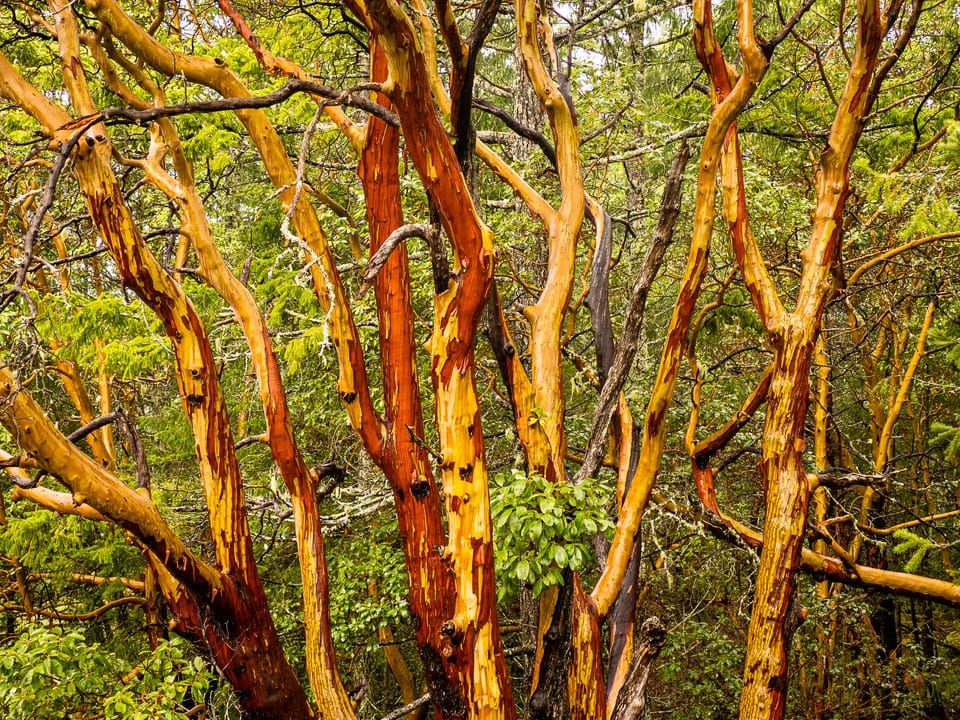Arbutus

The twisting branches and peeling bark of the arbutus are so evocative of Canada’s Pacific West Coast and deserve a closer look.
Where do they grow?
Arbutus trees (also known as madrones) can be found along the west coast of North America from Mexico to British Columbia as well as in the Mediterranean basin. They are remarkably resilient and can live for hundreds of years, withstanding drought, high wind, fires, and poor soil. They grow best in mild oceanic climates as they have a low tolerance to frost.
Arbutus are sun-loving trees and drought-tolerant. In British Columbia, they are often found on rocky outcrops overlooking the ocean. Elsewhere, they are found further inland at lower elevations and in open forests with good drainage.
Trees growing in rocky soil or trees that have sent up new shoots from their stump after a fire or other disturbance often have several trunks arising from a central point. In a more stable forest setting, they are taller and straighter.
Did you know? The arbutus is Joni Mitchell’s favorite tree and she mentions it in her song For the Roses.
Leaves & Bark
The arbutus is Canada’s only broad-leaved evergreen with large, glossy, leathery leaves. The leaves remain on the tree for several years. The older leaves turn reddish-orange and fall off gradually, often in June when the tree is putting its energy into flowering and growing new leaves.
The reddish-brown bark is thin and smooth, peeling off in long, papery strips to reveal newer, paler bark below. The trees develop a new layer of bark every year and the young, green bark is capable of photosynthesis.

Flowers & Fruit
Clusters of small, bell-shaped white flowers droop from the end of stems in April/May. They smell strongly of honey, making them very attractive to bees. They may also be a source of nectar for hummingbirds.
The rough-skinned, reddish-orange berries don’t develop immediately. Once they do appear, they are much appreciated by fruit-eating birds such as robins and waxwings. The berries are edible by humans but are relatively tasteless.
Additional Resources
Arbutus [BC Tree Book]
Hardwood and Winter Leaves [Salish Magazine]
Vancouver Island Arbutus Stress and Decline [The Land Conservancy of British Columbia]
Arbutus menziesii [USDA]
See Also
Nature Companion, a free app/website introducing many of the plants and animals found in Canada’s four western provinces [EcoFriendly West]
Urban Forests of Western Canada [EcoFriendly West]
They Grow Where No Other Tree Can - Canada’s Limber and Whitebark Pine [EcoFriendly West]
Photo credits: https://www.flickr.com/photos/apmckinlay/52641572328/ https://www.flickr.com/photos/apmckinlay/52075837375/
EcoFriendly West informs and encourages initiatives that support Western Canada’s natural environment through its online publication and the Nature Companion website/app. Like us on Facebook, follow us on Twitter and Mastodon, or subscribe by email.

Member discussion